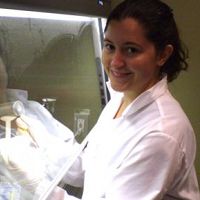Eilers, et al., 2012
Digging deeper to find unique microbial communities: The strong effect of depth on the structure of bacterial and archaeal communities in soil.
Eilers K.G., Debenport S., Anderson S., Fierer N. (2012)
Soil Biology and Biochemistry(50):58-65
-
Boulder, GRAD STUDENT
-
Boulder, INVESTIGATOR
-
Boulder, INVESTIGATOR
Abstract
Microorganisms exist throughout the soil profile and those microorganisms living in sub-surface horizons likely play key roles in nutrient cycling and soil formation. However, the distributions of microbes through the soil profile remain poorly understood, as most studies focus only on those communities found in near-surface horizons. Here we examined how microbial community structure changes within soil profiles, whether these changes are similar across soils from different landscape positions, and how the community-level variation within individual soil depth profiles compares to the variation across surface soils from a wide range of biomes. We characterized changes in bacterial and archaeal community composition and diversity with depth through nine soil profiles located in a forested montane watershed in Colorado, USA. Microbial community composition was determined by barcoded pyrosequencing of the 16S rRNA gene employing a primer set that captures both bacteria and archaea. Relative microbial biomass and soil carbon concentrations decreased exponentially with depth while soil pH increased in nearly all of the profiles examined. Bacterial diversity was typically highest in the top 10 cm of the profile; diversity typically dropped by 20e40% from the surface horizons to the deepest horizons sampled. Community composition was significantly affected by soil depth in all profiles, driven primarily by a decline in the relative abundance of Bacteroidetes with depth and the peak in the relative abundance of Verrucomicrobia between 10 and 50 cm. Microbial community composition across the nine pits was most variable in the surface horizons; communities at deeper soil depths were relatively similar regardless of landscape position. When compared to the microbial communities from 54 previously-analyzed surface soils collected across a wide range of biome types, we found that there was as much variation within individual soil pits as across surface soils from different biomes, emphasizing the importance of soil depth as an environmental gradient structuring soil microbial communities
Citation
Eilers K.G., Debenport S., Anderson S., Fierer N. (2012): Digging deeper to find unique microbial communities: The strong effect of depth on the structure of bacterial and archaeal communities in soil. Soil Biology and Biochemistry(50):58-65. DOI: 10.1016/j.soilbio.2012.03.011
 This Paper/Book acknowledges NSF CZO grant support.
This Paper/Book acknowledges NSF CZO grant support.
Associated Data
Gordon Gulch - Soil Microbes (2011)
2 components •
Gordon Gulch •
Biology / Ecology •
Kathryn Eilers
Explore Further



